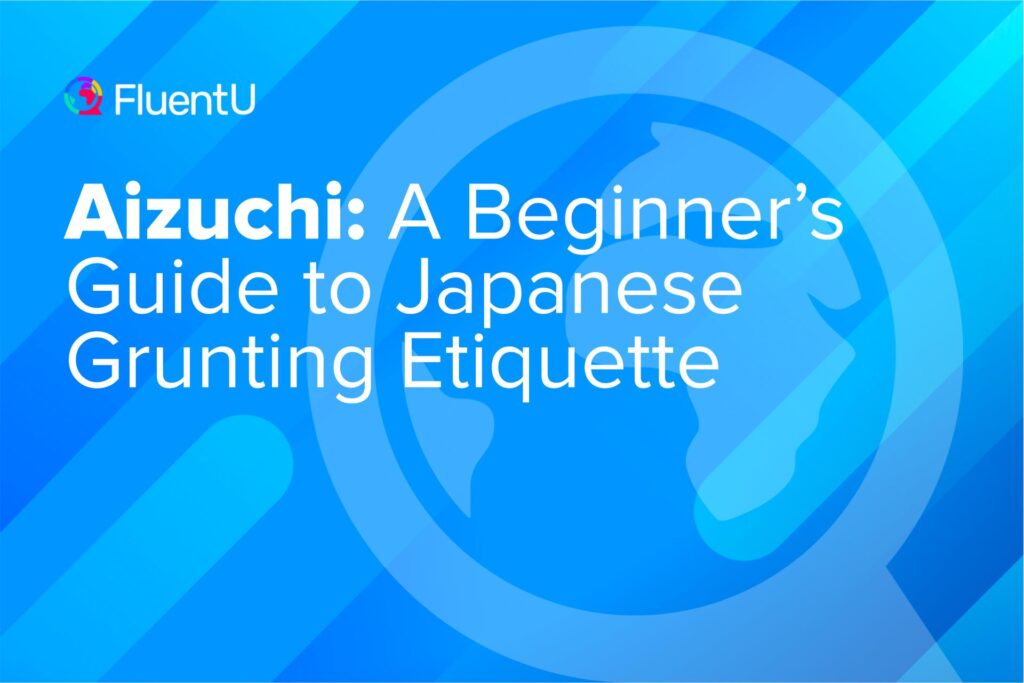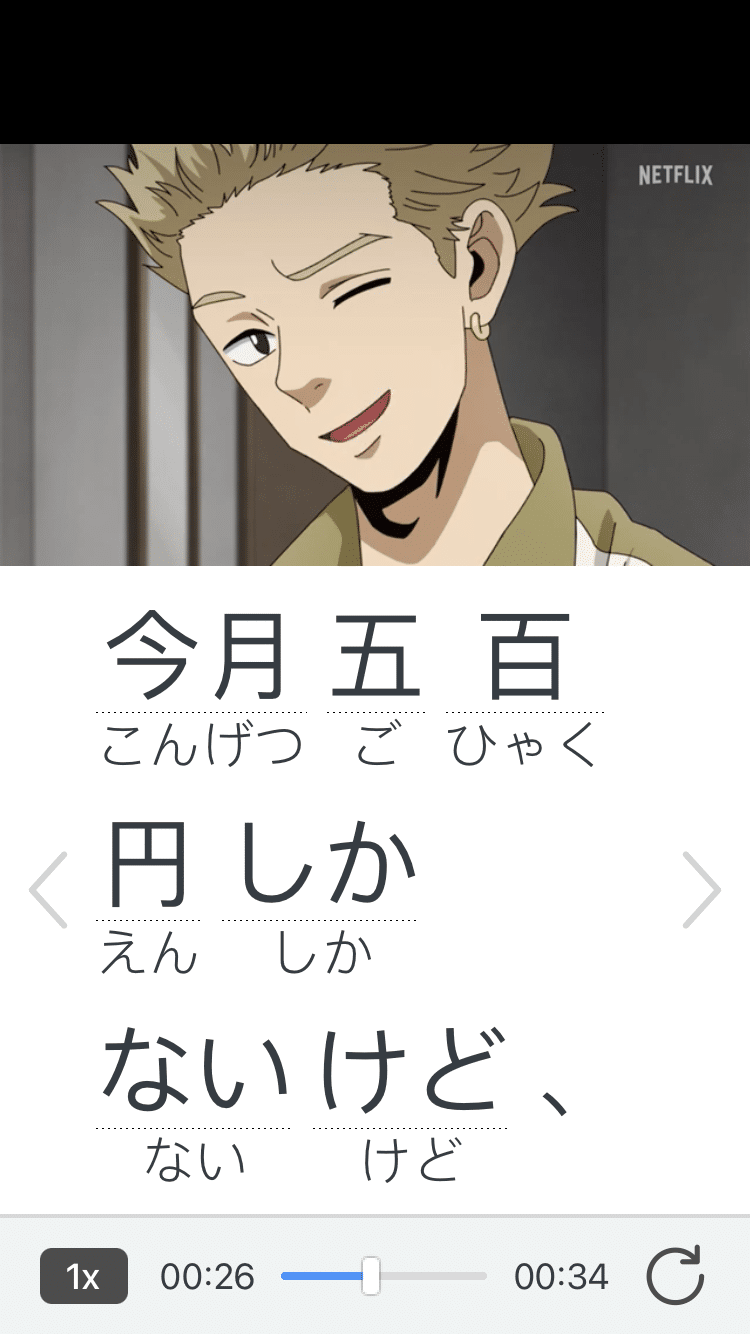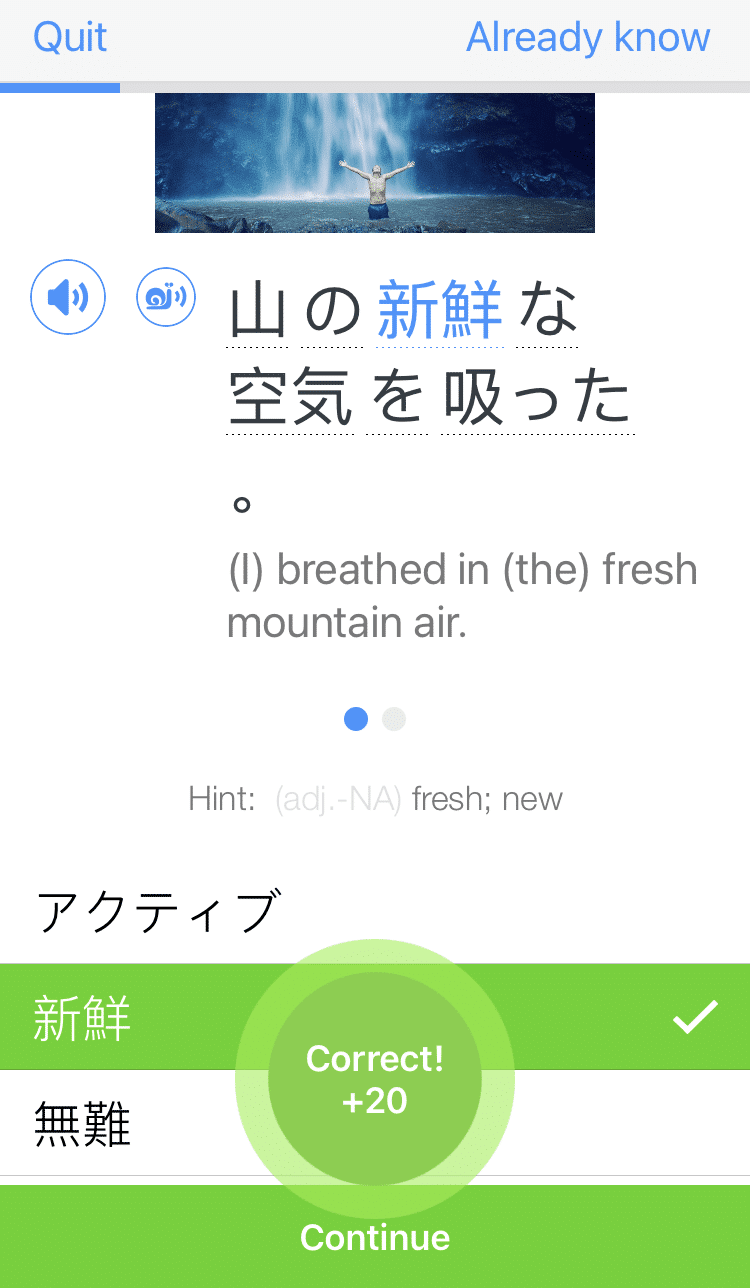Aizuchi: A Beginner’s Guide to Japanese Grunting Etiquette

Did you know that grunting is a natural part of Japanese conversation?
If you forget to utter うん , はい! or そう? , your silence could be interpreted as a lack of interest or even disagreement.
On the other hand, a well-placed そう could really go a long way in establishing rapport.
Hopefully, this post can help you get the most out of 相槌 (あいづち).
Download: This blog post is available as a convenient and portable PDF that you can take anywhere. Click here to get a copy. (Download)
What Is Aizuchi?
Many non-Japanese speakers are taught not to interrupt someone while they’re talking.
For example, my kindergarten class in the United States had a special totem stick which allowed its holder to talk. If any other students tried interjecting without the stick in hand, they’d be scolded by the teacher and the whole class would be reminded that only one person could talk at a time.
In Japan, it’s the complete opposite.
To show someone that you’re interested in what they’re saying or that you understand them, you use 相槌.
Aizuchi literally means “between mallet/hammer.” It consists of frequent interjections throughout a conversation to indicate that you’re listening attentively to whatever the speaker is saying—similar to “Uh-huh,” “Yeah,” “Really,” “I see,” “I get it,” “Right” and so on.
Perhaps you already use some of these interjections in conversation. While your friend is retelling you that tale about slaying a beast single-handedly in the Arctic, you might nod a few times or throw in a surprised “No way!” or “What happened next?”
相槌 works in a similar way, but it’s more relentless. As the listener in a conversation, you might find yourself doing just as much talking as the speaker.
Why Aizuchi Is Used
Simply put, you use aizuchi to show that you’re paying attention to the other person. Otherwise, they might think you’re uninterested in what they’re saying or that you’re being cold or distant.
Think of it this way. If you’re going on and on about a topic and the other person is just silently nodding and staring at you, you’d probably wonder whether they’re registering everything you’re saying or if it’s all just flying over their head.
As you’ll see in the next sections, 相槌 isn’t just about grunting randomly. It’s also about making the appropriate response within the appropriate context.
Also, if you’re going to insist on not using 相槌, expect to hear a lot of “Hello??” “Can you hear me?” and “Are you there?” from the people you’re talking to—whether in-person or over the phone.
Common Aizuchi Words
So now that you know what 相槌 is and why it’s used, you’re ready to rock it! Here are some of the most common 相槌 words and phrases.
はい (Yes/Uh-huh/Okay)
はい is often used in formal Japanese situations or with female speakers. It’s a polite way to express agreement or to confirm something.
ええ (Yes/That’s right/Gotcha)
ええ is used by women familiar with each other. It can also be used in a more relaxed setting than はい.
うん (Yeah/Yup/Uh-huh/That’s right)
Both sexes can use うん in casual conversations to mean the same thing as はい and ええ.
そう (I see)
そう is a short and sweet way to say “I see.” You may hear “そう、そう、そう、そう、そう” repeated quickly by the listener.
そうですか? (Is that so?)
そうですか can be used in formal situations. The slightly less formal そうですね is acceptable as well. Both of these mean “I see,” “Is that so?” and “That’s it, huh?”
そっか (I see/Got it)
そっか and そうですよね are used in casual situations to say “I see,” “Gotcha” and “Ah, that’s it.”
へえ (Yes/That’s right)
へえ (which sounds like “heeh”) is a common way to show shock or surprise. Use it to say “Really,” “Huh?!” “No way” or “Get out!”
Its meaning can vary depending on your tone. A simple nod and soft “へえ” will loosely translate into something like “Oh, really,” while a long and exaggerated “へえぇぇ?!” will sound more like “No way!” or “Get out — seriously?!”
本当に (ほんとうに or “Really?”)
本当に is a popular way to say “Really” or even “Seriously?” You can also use the more polite 本当ですか? (ほんとうですか?) to ask “Is that so?” Both of these would be the responses you’d get from your mother (or mother-in-law) after telling her about that heavy metal band you love: “Oh really? That’s nice, dear … ”
Aizuchi Etiquette: The Do’s and Don’ts
Now that you know the specific 相槌 words, let’s get into how to use them.
Use words of agreement to indicate that you’re listening—whether you actually agree with what the other person is saying or not.
In English, we often relate “yes” with agreement. In Japanese, it’s considered good manners to use はい, ええ and うん to show that you’re listening to the speaker—even if they’re saying something that makes you think “Hold up, that’s not quite right!”
Don’t interrupt with your opinion unless asked.
You might’ve have noticed that none of the 相槌 words we’ve discussed express disagreement in any way. That’s because interrupting to say something like “Wait a sec, that doesn’t make sense!” is considered rude and is a surefire way to alienate your Japanese acquaintances!
Express disagreement through nonverbal means.
Just because you can’t say you disagree doesn’t mean you can’t show it. You can, for example, use gestures like crossing your arms in an X shape in front of you to say “No.” Alternatively, you can inhale a sharp breath through your teeth to create a slight hissing sound—similar to what you’d make when you see the extent of someone’s injuries.
Use pauses in the other person’s speech as a cue to insert aizuchi.
Let’s say the other person is saying:
しかし私がまさにカメラをつかんだ時、… 鳥はぱっと飛び出してゆきました!…
(しかしわたしがまさにかめらをつかんだとき、… とりはぱっととびだしてゆきました!… )
But just as I got my camera, … the bird suddenly flew off! …
In this case, you can interject words like “はい” or “へえ!” into the bits with the “…”
How to Respond to Aizuchi
You know what words constitute 相槌 and how to use them in conversation. But what if you’re the one on the other end of the conversation? How do you ensure that the other person has ample opportunities to use 相槌?
Incorporate natural cues to pause while you’re talking.
Try it before or after you say “and,” “but,” “however,” “so then” and so on, like this:
その時は、 … 浅草に行ってました …
(そのときは、… あさくさにいってました … )
So then … we went to Asakusa …
If you didn’t pause, but someone else still inserts an aizuchi into conversation, respond with an aizuchi of your own and move on.
The conversation would look like this:
A: 良い日になるだろうと思っていたが …
(よいひになるだろうとおもっていたが …)
B: ええ。
A: … その後で雨が降り始めたので…
(…そのあとであめがふりはじめたので …)
B: そう、そう、そう。
A: うん、なので …
A: I thought it’d be a good day …
B: Uh-huh.
A: … but then it started to rain so—
B: I see.
A: Yeah, so we had to …
Use body language.
You can also just continue what you’re saying when you’re presented with an 相槌. A quick nod will also suffice as you continue to list reasons as to why cat cafes are the best, or reenact your favorite experience in Japan.
Recognizing 相槌 and incorporating it into everyday conversation can really help you while learning and communicating in Japanese. It’s one more cultural difference that you can understand and embrace.
It also helps to actually see 相槌 being used by Japanese speakers. Whether that’s through Japanese titles on Netflix or Japanese media clips on a language learning program like FluentU, observing native speakers’ body language and facial expressions when they use 相槌 will guide you in all your social interactions.
FluentU takes authentic videos—like music videos, movie trailers, news and inspiring talks—and turns them into personalized language learning lessons.
You can try FluentU for free for 2 weeks. Check out the website or download the iOS app or Android app.
P.S. Click here to take advantage of our current sale! (Expires at the end of this month.)

Now that you know what aizuchi is and can successfully use it, get out there and give it a try! Good luck!
And One More Thing...
If you love learning Japanese with authentic materials, then I should also tell you more about FluentU.
FluentU naturally and gradually eases you into learning Japanese language and culture. You'll learn real Japanese as it's spoken in real life.
FluentU has a broad range of contemporary videos as you'll see below:

FluentU makes these native Japanese videos approachable through interactive transcripts. Tap on any word to look it up instantly.

All definitions have multiple examples, and they're written for Japanese learners like you. Tap to add words you'd like to review to a vocab list.

And FluentU has a learn mode which turns every video into a language learning lesson. You can always swipe left or right to see more examples.

The best part? FluentU keeps track of your vocabulary, and gives you extra practice with difficult words. It'll even remind you when it’s time to review what you’ve learned. You'll have a 100% personalized experience.
Start using the FluentU website on your computer or tablet or, better yet, download the FluentU app from the iTunes or Google Play store. Click here to take advantage of our current sale! (Expires at the end of this month.)
Download: This blog post is available as a convenient and portable PDF that you can take anywhere. Click here to get a copy. (Download)







